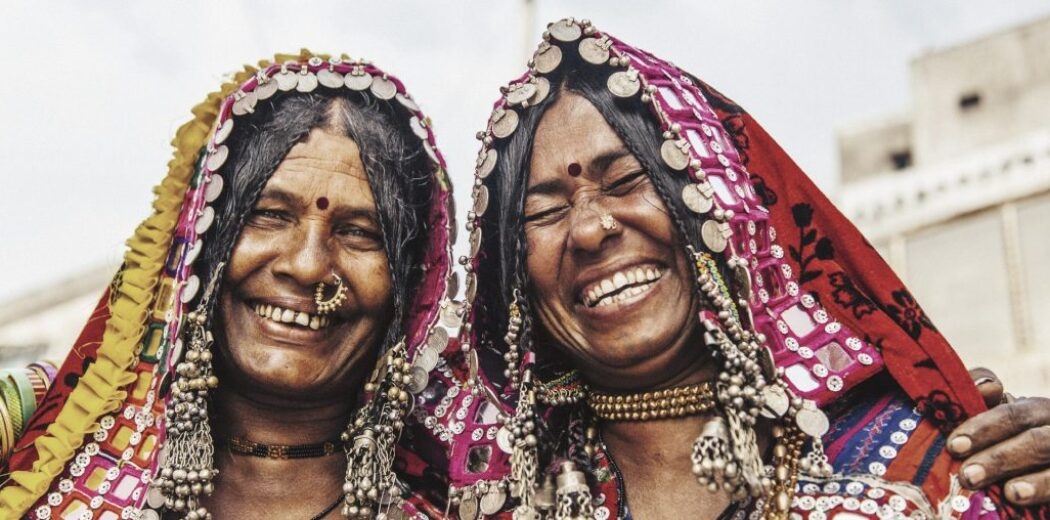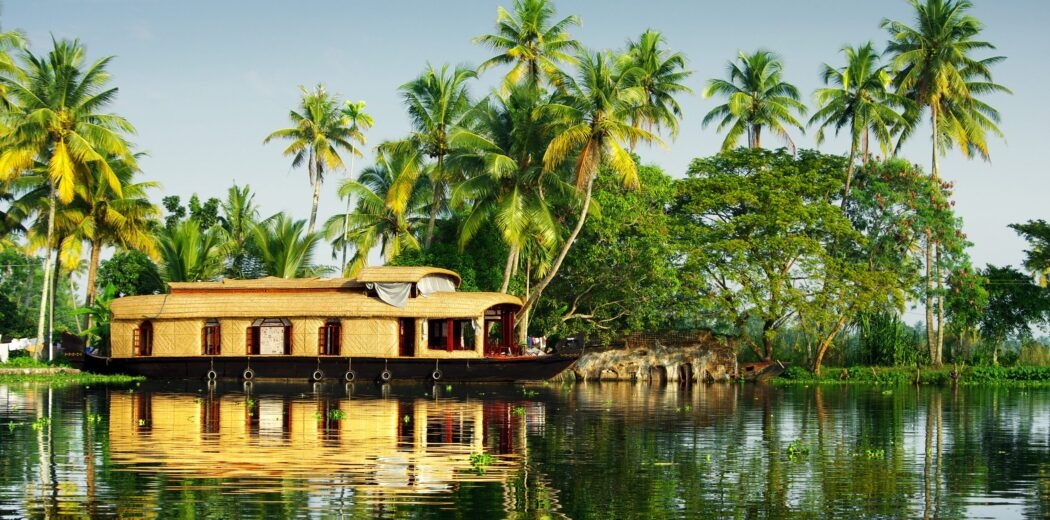India is a vast land, home to a myriad of different people and cultures.
It’s a nation of contrasts, with the arid desert of the north seemingly an entire world away from the lush greenery of the south. The cities are full of hustle and bustle, while the rural areas are peaceful in their own way.
In a country of so many differences though, there’s one thing that unites India - the opportunity to celebrate.
There are countless celebrations throughout the year, and to help you navigate them, this is our expert guide to festivals in India and when to enjoy them.

Diwali
Diwali, or Deepavali in Sanskrit, literally translates to ‘a row of lights’ and as expected, this festival is known as the festival of light. The origins honour the victory of good over evil, dating back to the ancient story of Hindu deities Rama and Sita. For Hindus, Diwali marks the date Rama and his wife, Sita, returned to their kingdom of Ayodhya after a period in exile. This festival traditionally lasts five days, with Diwali celebrations coming to a head on the third day.

Each day has a different meaning, and various traditions are observed throughout. Day one is dedicated to celebrating wealth – people buy gold and clean their homes ready to welcome Lakshmi, the goddess of prosperity. On day two, rangolis – Hindu folk art created using coloured grains or flowers – adorn doorways and courtyards of homes. During the third day of major celebration, hundreds of diyas – small clay lamps – and candles are lit and placed around houses. The streets are also filled with locals setting off fireworks, so it’s a wonderfully lively celebration. Gifts and sweets are exchanged and during the last couple of festival days, the new year is welcomed with open arms.

Where to celebrate Diwali in India
Although Diwali is a Hindu festival, everyone in India celebrates, so festivities occur in all parts of the country. The only place where Diwali isn’t a big deal is in Kerala. The festival has never really held much importance here, due to the state having its own state-specific celebration in September called Onam. Aside from the large cities such as Delhi and Mumbai, which can become overwhelmingly chaotic during this time of year, the biggest festivities take place across Rajasthan and the rest of north India.

Hoards of lights hang over buildings, and courtyards are beautifully decorated with rangolis, petals and diyas. Amritsar is a particularly charming city in which to celebrate Diwali. Diwali holds cultural significance for Sikhs too, and the incredible Golden Temple takes on an ethereal quality when illuminated by thousands of candles.

When to celebrate Diwali in India
Diwali falls between October and November each year but the exact date changes in accordance with the Hindu lunar calendar. The best time to visit north India is during the cooler months of October and March. At this time of year, it’s still sunny but temperatures aren’t too humid, so visiting India during Diwali is sure to be a pleasant experience.


Holi
Perhaps India’s most famous festival is the Holi festival, renowned for its colours and vivacious nature. Although there are many Hindu stories and legends thought to be linked to Holi, the festival ultimately celebrates the triumph of good over evil. During the celebrations, thousands of festival goers take to the streets with coloured paint powder and water balloons. Music, dance and traditional sweets feature as part of the celebrations too, so experiencing these festivities in India is an out of this world experience.

Where to celebrate Holi in India
For the biggest Holi celebrations, locals flock to the cities of Mathura and Vrindavan, both around a four hour drive or train ride from Delhi. Lord Krishna is believed to have grown up in the area, so both these towns are considered holy. The celebrations may be too much for tourists here though, as they can become rowdy due to the sheer number of participants.

Rajasthan is an alternative draw for tourists wanting to celebrate Holi, and for good reason. In places like Pushkar and Jaipur, the Holi festivities begin at night, when statues of deities are paraded through the streets accompanied by singing and drumming. In public courtyards, people gather around fires to dance and perform religious rituals. The next morning, soon after the sun has risen, everyone – from children to grandparents – gathers in the streets to throw powder over each other.

If you’re keen to get involved in the festivities, be aware that there’ll be no escaping getting drenched in colour; many participants come armed with water pistols to make sure the powder sticks. It’s a good idea to wear clothes you don’t mind not wearing again, and to protect long hair from the dye by tying it up or wearing a hat. Wherever it is in India that you decide to celebrate Holi, it’s bound to be an experience you’re not going to forget!

When to celebrate Holi in India
Holi is celebrated in March each year, on the day after the full moon. It’s best to double check the exact dates Holi is celebrated in the region you’re visiting though, as they differ across India. In West Bengal and Odisha, Holi celebrations take place a day earlier than the rest of India and in the sacred cities of Mathura and Vrindavan, they commence an entire week before.


Onam
One of south India’s biggest festivals, Onam is celebrated across Kerala. A Hindu festival, Onam is celebrated for 10 days during the Malayalam month of Chingam (August – September). According to legend, the story of the Onam festival commemorates the arrival of the ancient King Mahabali in Kerala on his annual visit from Patala, or the underground world.

As with Diwali, different traditions are observed on each of the festival days. During the first few days of the festival, floral arrangements known as pookalam are created. Traditionally, these pookalams are each completed with ten rings, representing the ten different Hindu gods. On the fourth day of the festival, incredible snake boat races kick off across Kerala. The Vallamkali is the most famous boat race of them all, and takes place on the Pampa river.

It’s a real spectacle, with a grand procession accompanying the snake boats as they glide down the river. For foodies, the final two days of the festival are a real treat, as it involves the Onasadya, or Onam Feast. This nine-course meal comprises between 11 and 13 traditional dishes, all served on a banana leaf. A feast for the tastebuds, this devotional meal usually lasts around seven hours.

When to celebrate Onam in India
Onam is celebrated during the Malayalam month of Chingam, which falls in August or September each year. Although the festival lasts 10 days, it’s a good idea to time your trip so that you’re able to experience the boat race on the 4th day of the festival and the vegetarian feast on the last two days. It’ll be fairly hot in south India during the summer months, so make sure you pack light clothing (bear in mind though that covering shoulders and knees during religious ceremonies is thought to be respectful).


Jaisalmer Desert Festival
The Jaisalmer Desert Festival is Rajasthan’s way of introducing both domestic and foreign tourists to the culture of their imperial state. During the 12th century, the city of Jaisalmer was a key stopping point on the trade route between India and Central Asia and Europe, so it has long been the site of trade fairs and festivals. Today, the city of Jaisalmer pays homage to its heritage with its Desert Festival.

During the three day festival, elements of Rajasthani folklore come together for a wonderful celebration. Jugglers, traditional Gair dancers and fire performers all excel in captivating attendees. Beyond performances, the main feature of the festival is friendly competition. From camel races to moustache competitions, there’s something to entertain people of all ages. There’s even a turban tying competition, followed by a pageant to welcome home Mr. Desert, the “most Rajasthani” of men across the state. Organised by the Rajasthan Tourism Department each year, this festival offers a unique insight into Rajasthani culture that you’d be hard pressed to find anywhere else.

When is Jaisalmer Desert Festival?
The festival runs over three days in February each year, and takes place near the iconic Sam Sand Dunes. Jaisalmer can become fairly overrun with tourists during the festival, so it’s a good idea to plan your trip and book your accommodation well in advance. February is one of the best times to visit north India, as temperatures are warm but not too humid.


Pushkar Camel Fair
The Pushkar Camel Fair, or Pushkar Mela as it’s locally known, is an annual camel and livestock fair held in the charming town of Pushkar that borders the Thar desert. Originally focused on the buying and selling of camels, it has now become an important tourist attraction. Competitions such as the ‘longest moustache’ and ‘bridal competition,’ have transformed this once trade-focused event into family fun for tourists and locals alike. In recent years, the festivities have also included an exhibition cricket match between the local Pushkar club and a team of foreign tourists.

For both animal lovers and those wanting a unique insight into Rajasthani culture, the Pushkar Camel Fair is a must visit. A spectacle on an epic scale, this annual two week long festival brings in thousands of camels, horses and cattle from across the state. Over 400,000 people visit the festival during the fourteen days it runs for – it’s one of the most visited fairs in Rajasthan. Strolling through the vast expanse of sand dunes dotted with camels and getting to know the locals is a truly unforgettable experience.

When is Pushkar Camel Fair?
Pushkar Camel Fair takes place in the months of October and November each year. Pushkar is well connected to the major cities in Rajasthan by both road and rail, so it’s pretty easy to reach. October is the start of India’s dry season, and by November the skies become clear and sunny. In the desert, temperatures can still feel slightly chilly at night, so it’s a good idea to pack layers.


Jaipur Kite Festival
Rajasthan has long since been considered one of the most colourful and culturally rich states in the country. This northern state plays host to a number of festivals, so it’s often hard to choose which ones are really worth making the trip for. Jaipur Kite Festival is definitely one worth experiencing though, with cultural performances and hundreds of beautiful kites combining to create a true embodiment of Rajasthani culture.

Jaipur Kite Festival originated from the local desire to celebrate the turning of the season. When winter came to an end, many residents of Jaipur would take to their rooftops and spend long hours in the summer sun. Gradually, friendly kite flying competitions started to happen across the city and so the Jaipur Kite Festival was born. Today, the Jaipur Kite Festival involves the whole city coming together to put on a showcase of incredible kite flying, along with local musicians and traditional folk dances. There’s nothing quite like watching the sea of blue above the desert being peppered with hundreds of colourful kites as they dance through the sky.

When is Jaipur Kite Festival?
Jaipur Kite Festival takes place on the 14th January each year, the holy day of Makar Sankranti. The festival is extremely popular, so it’s best to plan your trip and book well in advance. As in Pushkar, Jaipur can get cold at night during India’s winter, so remember to pack light yet warm clothing.

Discover our favourite journeys through India
Feeling inspired? Our expert travel designers are always on hand to help you plan your cultural journey through India.






